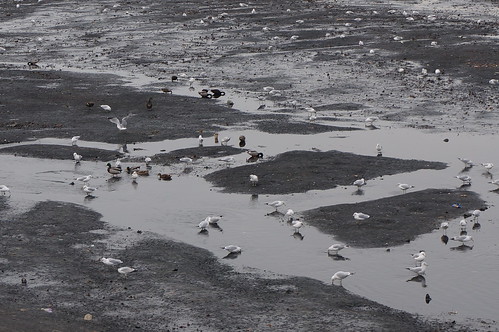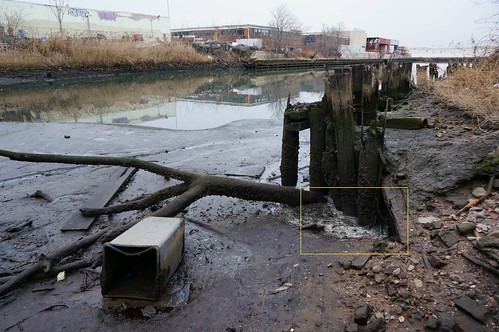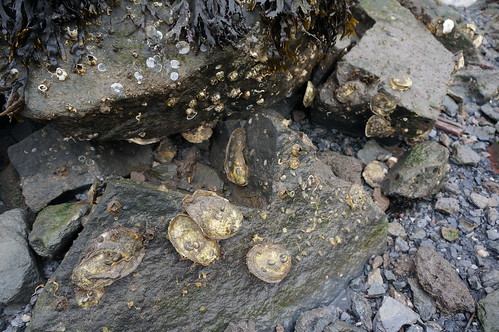The winter months provide some of the best times to witness low water conditions in New York harbor. For a few hours each year parts of the creek are exposed, that are otherwise always underwater. This results from falling water levels that result from colder temperatures (more here) as well as new moon cycles, where tides are more extreme due to the combined gravitational pull of the moon and sun. Simply put, if one is interested in seeing the most recessed tides of the year, aim for the new moon low tides during January, February and March. Below are a few themes we took note of this winter during lowest tide observations on Newtown Creek.
Exposed Sediment
While much of the creek contains maritime navigational channels, a number of the tributaries have remained unused and unmaintained for maritime use for a number of years. The shallow features native to the creek are returning, both naturally as well as artificially via heavy deposits from outfalls. Areas like Maspeth creek (above) are a prime example of such, where sediment from a combined sewer outfall have helped fill in most of this tributary. Other shallow areas are exposed throughout the creek, that may otherwise be difficult to see given the high turbidity in much of the creek’s waters.
Fresh Water Sources
Many of the original fresh water inputs into the creek have been covered up and/or diverted into the sewer system. Yet, the natural flow of springs can persist amongst industrial infrastructure and reshaping of the land. Lowest tide events allow the opportunity to spot some of these fresh water sources – which can be vital for future planning and remediation of the creek. Look for images with a yellow box around the spring input in the slideshow above, like this one from English Kills.
Filter Feeders
We have seen a great increase in the populations of organisms that help filter the water through natural processes. This includes ribbed mussels, oysters and clams. Oysters and clams in particular can be difficult to spot given their preference for staying submerged in water and sediment. This winter we found even more clusters of wild oysters and look forward to ongoing surveying and mapping of these vital organisms as they re-emerge in Newtown Creek.


